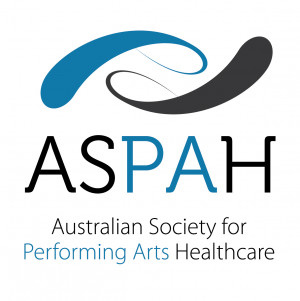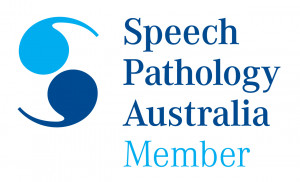- Madill, C., Nguyen, D., Eastwood, C, Heard, R. & Warhurst, S. (in press, accepted June 2018) Comparison of Cepstral Peak Prominence measures using the ADSV, SpeechTool and VoiceSauce acoustic analysis programs in vocally healthy female speakers. Acoustics Australia
Crocco, L., McCabe, P &. Madill, C. (in press, accepted February 2018) Principles of motor learning in one-to-one classical singing training: A pilot study Journal of Voice
Look, C., McCabe, P. Heard, R. & Madill, C. (2018). Show and Tell: Video Modeling and Instruction without Feedback improves performance but is not sufficient for retention of a Complex Voice Motor Skill. Journal of Voice DOI :doi-org.ezproxy1.library.usyd.edu.au/10.1016/j.jvoice.2017.09.023
Madill, C., Warhurst, S.& McCabe,P. (2017): The Stakeholder Model of voice research: Acknowledging barriers to human rights of all stakeholders in a communicative exchange, International Journal of Speech-Language Pathology, Page1-4. DOI: 0.1080/17549507.2017.1400102
Madill, C., C. Sheard, and R. Heard (2017) Are Instructions to Manipulate Specific Parameters of Laryngeal Function Associated with Auditory-Perceptual Ratings of Voice Quality in Nondisordered Speakers? Journal of Voice. 31(4): p. 504.e21-504.e33.
Crocco, L., Madill, C., & McCabe, P. (2017). Evidence-Based Teaching and Learning Frameworks for Classical Singing Training: A Systematic Review. Journal of Voice 31 (1), 130.e7-130.e17.DOI:10.1016/j.jvoice.2015.12.001.
Warhurst, S., Madill,C., McCabe, P. Heard, R., Ternström, S. & Yiu, E. (2017). Perceptual and Acoustic Measurement of Good Voice Quality in Male Radio Performers Journal of Voice 31 (2), 259.e1–259.e12http://dx.doi.org/10.1016/j.jvoice.2016.05.016
Blyth, K., McCabe, P., Madill, C., & Ballard, K.J. (2016). Ultrasound Visual Feedback – Articulation Therapy Following Partial Glossectomy. Journal of Communication Disorders. 61 http://dx.doi.org/10.1016/j.jcomdis.2016.02.004
Blyth, K., McCabe, P., Madill, C. & Ballard K.J. (2015). Speech and swallow rehabilitation following partial glossectomy: A systematic review. International Journal of Speech Language Pathology. (). DOI 10.3109/17549507.2014.979880 PMID 25515427
Eastwood, C. , Madill, C., & McCabe, P. (2015). The Behavioural Treatment of Muscle Tension Voice Disorders: A Systematic Review. International Journal of Speech Language Pathology 17 (3) 287-303 DOI 10.3109/17549507.2015.1024169
Jocelyne-May, C., Madill, C., Thorpe, W. & McCabe, P. (2015). The Effect of Clinician-Feedback Type in the Pre-Practice Acquisition of a Vocal Siren. Folia Phoniatrica et Logopaedia 67 (2) 57-67 DOI: 10.1159/000371884
Stone, D., McCabe, P., Palme, C.E., Heard, R., Eastwood, C., & Madill, C. (2015). Voice Outcomes Following Transoral Laser Microsurgery for Early Glottic Cancer - Considering Signal Type and Smoothed Cepstral Peak Prominence. Journal of Voice. 29 (3), 370-381. DOI 10.1016/j.jvoice.2014.08.018. PMID 25301299
Blyth, K., McCabe, P., Heard, R., Clark, J. & Madill, C., Ballard K.J., (2014). Cancers of the tongue and floor of mouth: five- year file audit within the acute phase. American Journal of Speech Language Pathology 23(4):668-78 PMID 2508917
Blyth, K., McCabe, Madill, C. & P. Ballard K.J. (2014). Speech and swallow rehabilitation following partial glossectomy: A systematic review. International Journal of Speech Language Pathology. Published online on December 17, 2014. DOI:10.3109/17549507.2014.979880.
Warhurst, S., Yiu, E., McCabe, P., Wang, G., S. & Madill, C. (2014). Quantitative Measurement of Vocal Fold Vibration in Male Radio Performers and Healthy Controls using High-Speed Videoendoscopy. PLoS One Published: June 27, 2014 DOI: 10.1371/journal.pone.0101128.
Chan, A., Madill, C. & McCabe, P. (2013). The Implementation of Evidence-Based Practice in the Management of Functional Voice Disorders in Adults: A National Survey of Speech Language Pathologists. International Journal of Speech-Language Pathology. 15(3): 334–344 PMID 23642210 doi: 10.3109/17549507.2013.783110.
Warhurst, S., McCabe, P. & Madill, C. (2013). What Makes a Good Voice for Radio: Perceptions of Radio Employers and Educators. Journal of Voice. 27 (2) 217- 224 (Impact: 1.555) ERA B PMID 23159029 doi:10.1016/j.jvoice.2012.08.010
Warhurst, S., McCabe, P., Yiu, E., Heard, R. & Madill, C., (2013) Acoustic Characteristics of Male Commercial and Public Radio Broadcast Voices. Journal of Voice 27 (5) 655 e1-7.
Warhurst, S., Madill, C., McCabe, P. Heard, R. & Yiu, E. (2012). The Vocal Clarity of Female Speech-Language Pathology Students: An Exploratory Study Journal of Voice. 26, 63-68. PMID: 21439779 doi:10.1016/j.jvoice.2010.10.008
Signorelli, M. Madill, C. & McCabe, P. (2011). The Management of Vocal Fold Nodules in Children: A National Survey of Speech Language Pathologists. International Journal of Speech Language Pathology. 13(3): 227–238. DOI: 10.3109/17549507.2011.549570 PMID: 21381977
McIlwaine, A. Madill, C. & McCabe, P. (2010). Voice Therapy Prepractice and the Principles of Motor Learning. ACQuiring Knowledge in Speech, Language and Hearing.12 (1) 29-35
Madill, C., Sheard, C. & Heard, R. (2010) Differentiated vocal tract control and the reliability of interpretations of nasendoscopic assessment. Journal of Voice Volume 24, 3, Pp 337- ERA B PMID: 21439779 doi:10.1016/j.jvoice.2010.10.008
McCabe, P., Purcell, A., Baker, E., Madill, C, & Trembath, D. (2009). Case based learning: One route to evidence based practice. Evidence-based Communication Assessment and Intervention. 3 (4) 208 - 219
Madill, C. (2001) Differentiated vocal tract control in the treatment of voice disorders. ACQuiring Knowledge in Speech, Language and Hearing., (3), 59-62.
Walzak, P., McCabe, P. Madill, C. & Sheard, C. (2008). The acoustic effects of actor voice training after 12 months of actor training. Journal of Voice. 22 (3) 300- 313 PMID: 17512170. DOI: 10.1016/j.jvoice.2006.10.006
Under review
Madill, C., Nguyen, D., Cham, K., Novakovic, D. & McCabe, P. (under review) The impact of nasalance on cepstral peak prominence and harmonics-to-noise ratio. The Laryngoscope.
Black, R., Madill, C., McCabe P., Glanville, A. Bogaardt, H., and MacDonald, P. (under review) Oropharyngeal Dysphagia and Dysphonia after Lung and/or Heart Transplant: a systematic review. Disability and Rehabilitation.











